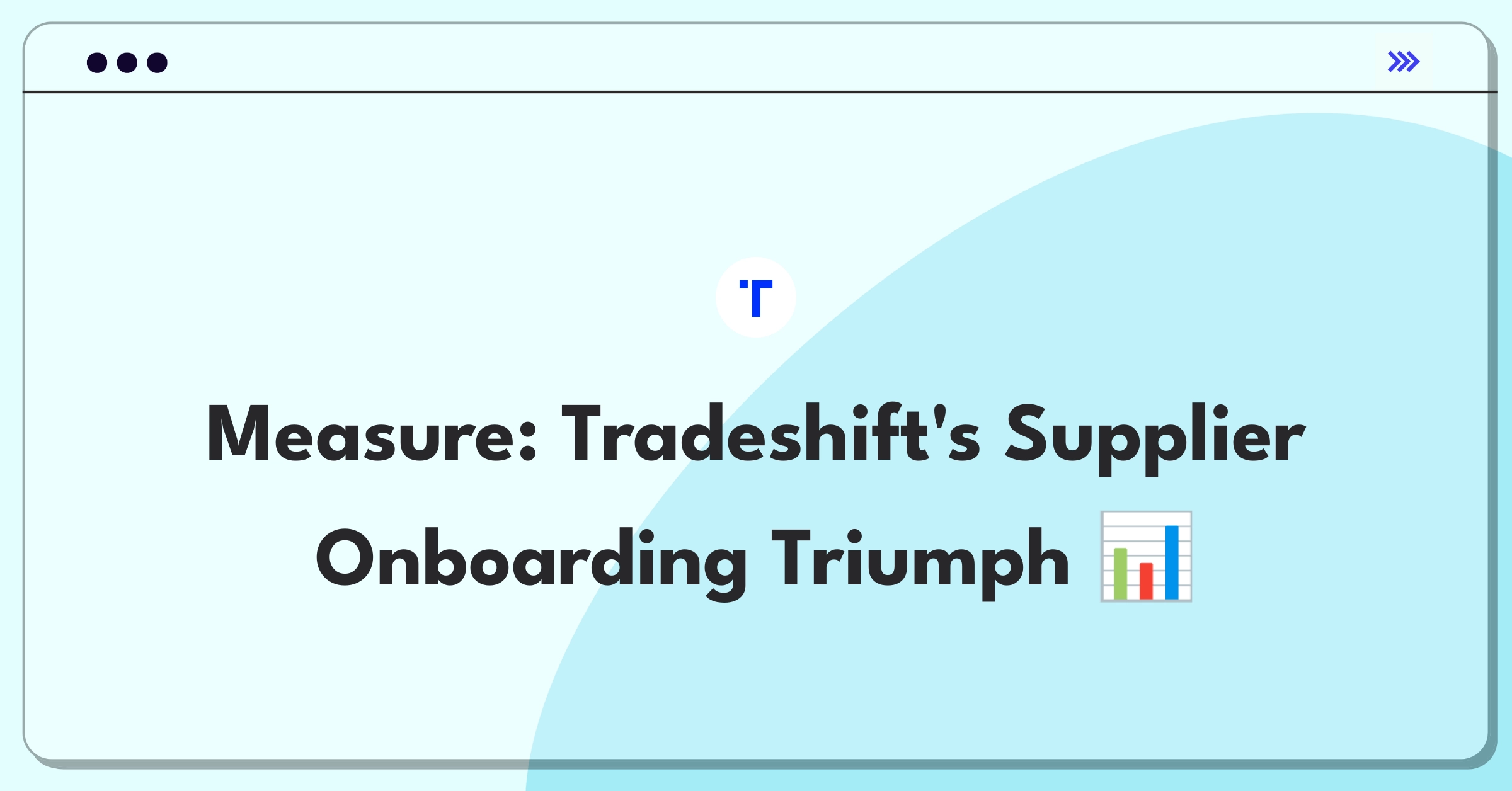Introduction
Defining the success of Tradeshift's supplier onboarding feature within the Tradeshift platform is crucial for optimizing the product's performance and driving business value. To approach this product success metrics problem effectively, I'll follow a structured framework that covers core metrics, supporting indicators, and risk factors while considering all key stakeholders.
Framework Overview
I'll follow a simple success metrics framework covering product context, success metrics hierarchy, and strategic initiatives.
Step 1
Product Context
Tradeshift's supplier onboarding feature is a critical component of their B2B network platform, designed to streamline the process of adding new suppliers to a company's supply chain. This feature aims to reduce friction in supplier relationships, increase efficiency, and improve data accuracy.
Key stakeholders include:
- Buyers (enterprise customers)
- Suppliers
- Tradeshift (platform provider)
- Finance departments
- Procurement teams
The user flow typically involves:
- Invitation: Buyers invite suppliers to join the platform
- Registration: Suppliers create accounts and provide necessary information
- Verification: Tradeshift verifies supplier information
- Integration: Suppliers are connected to buyers' systems
- Activation: Suppliers begin transacting on the platform
This feature is central to Tradeshift's strategy of building a comprehensive B2B network and supports their vision of digitizing global trade. Compared to competitors like Ariba or Coupa, Tradeshift's onboarding process aims to be more user-friendly and faster, with a focus on supplier adoption.
In terms of product lifecycle, the supplier onboarding feature is in the growth stage. It's established but still evolving as Tradeshift expands its network and refines the onboarding experience.
Subscribe to access the full answer
Monthly Plan
The perfect plan for PMs who are in the final leg of their interview preparation
$66.00 /month
- Access to 8,000+ PM Questions
- 10 AI resume reviews credits
- Access to company guides
- Basic email support
- Access to community Q&A
Yearly Plan
The ultimate plan for aspiring PMs, SPMs and those preparing for big-tech
- Everything in monthly plan
- Priority queue for AI resume review
- Monthly/Weekly newsletters
- Access to premium features
- Priority response to requested question


.png)